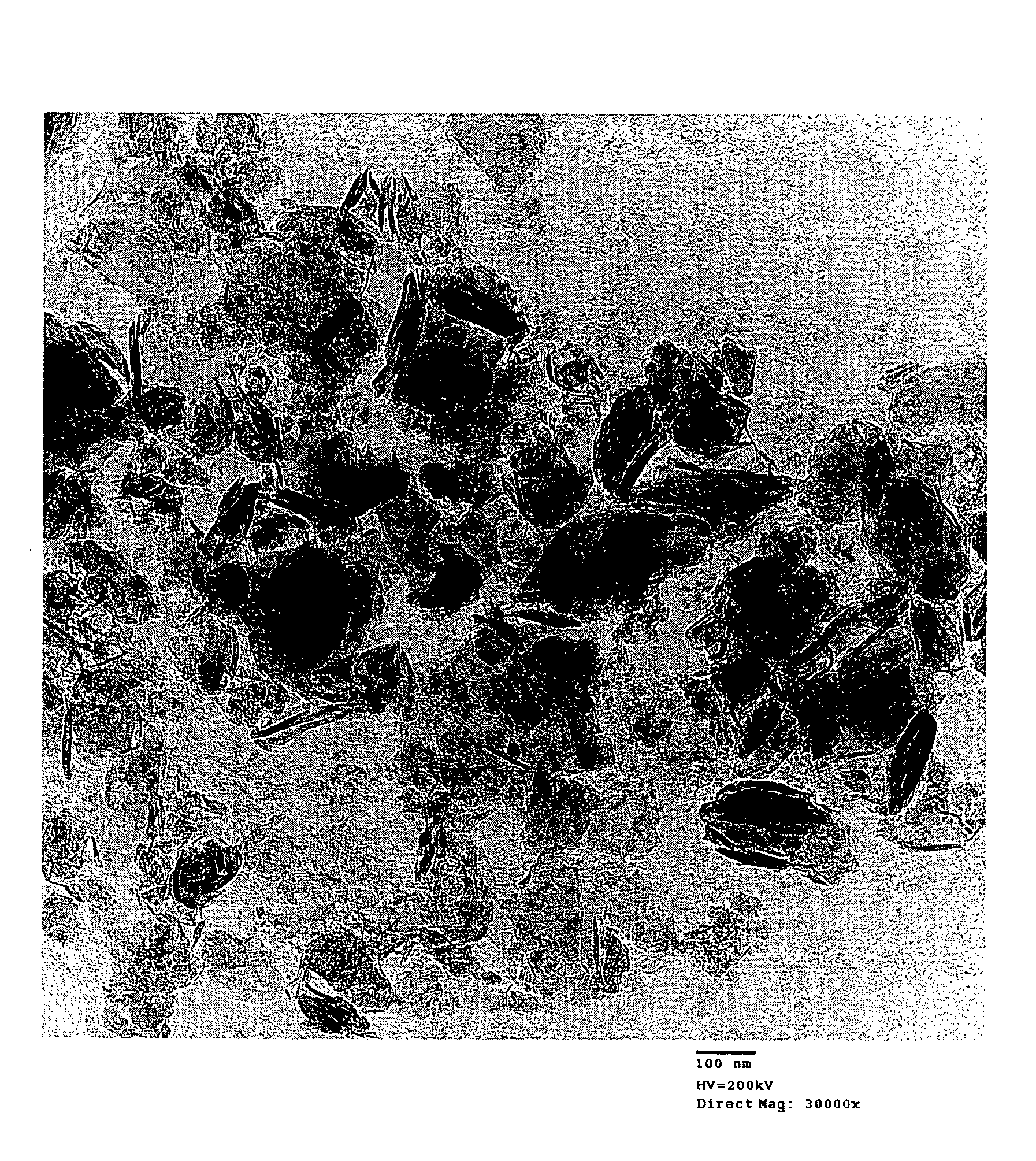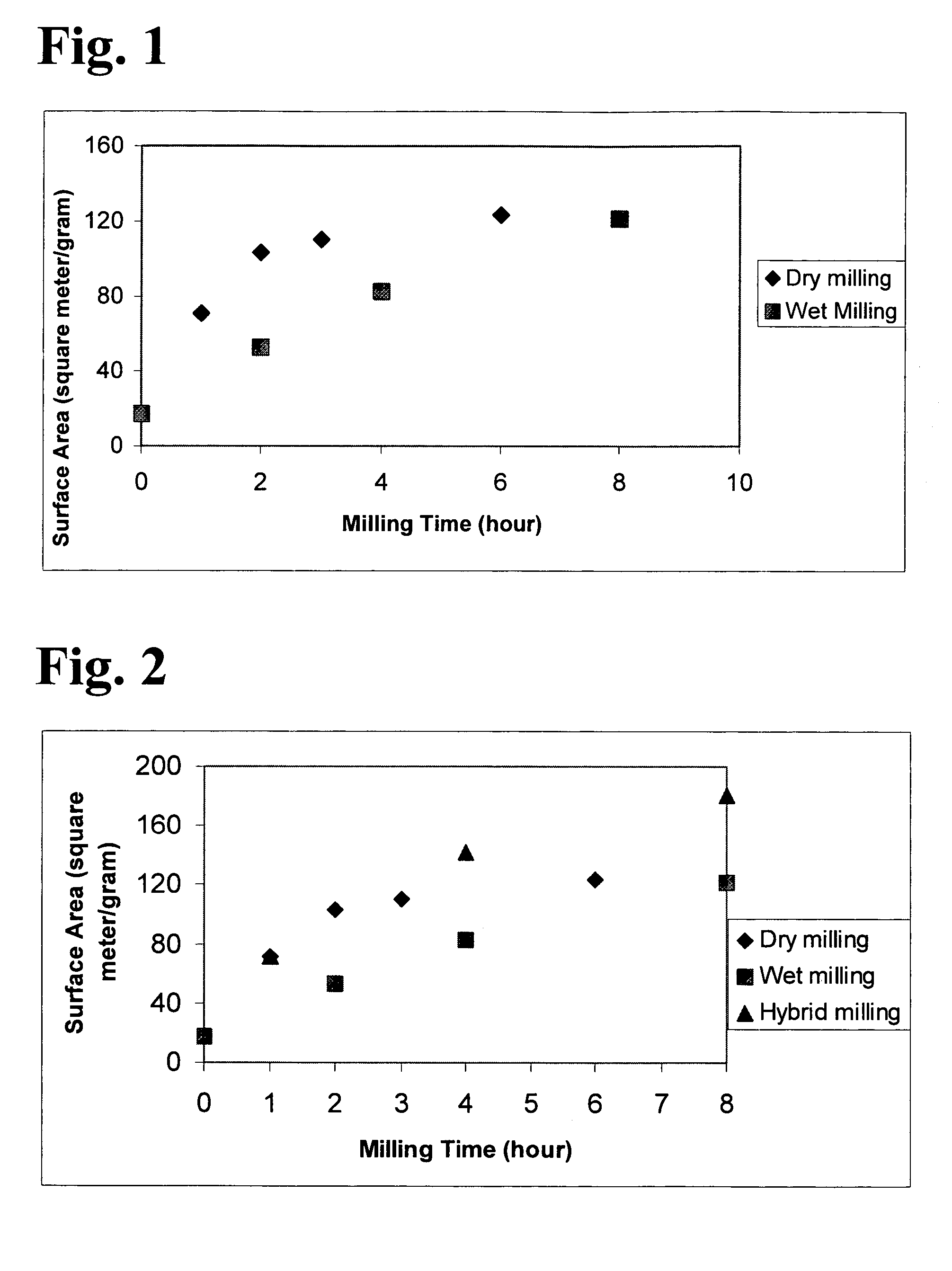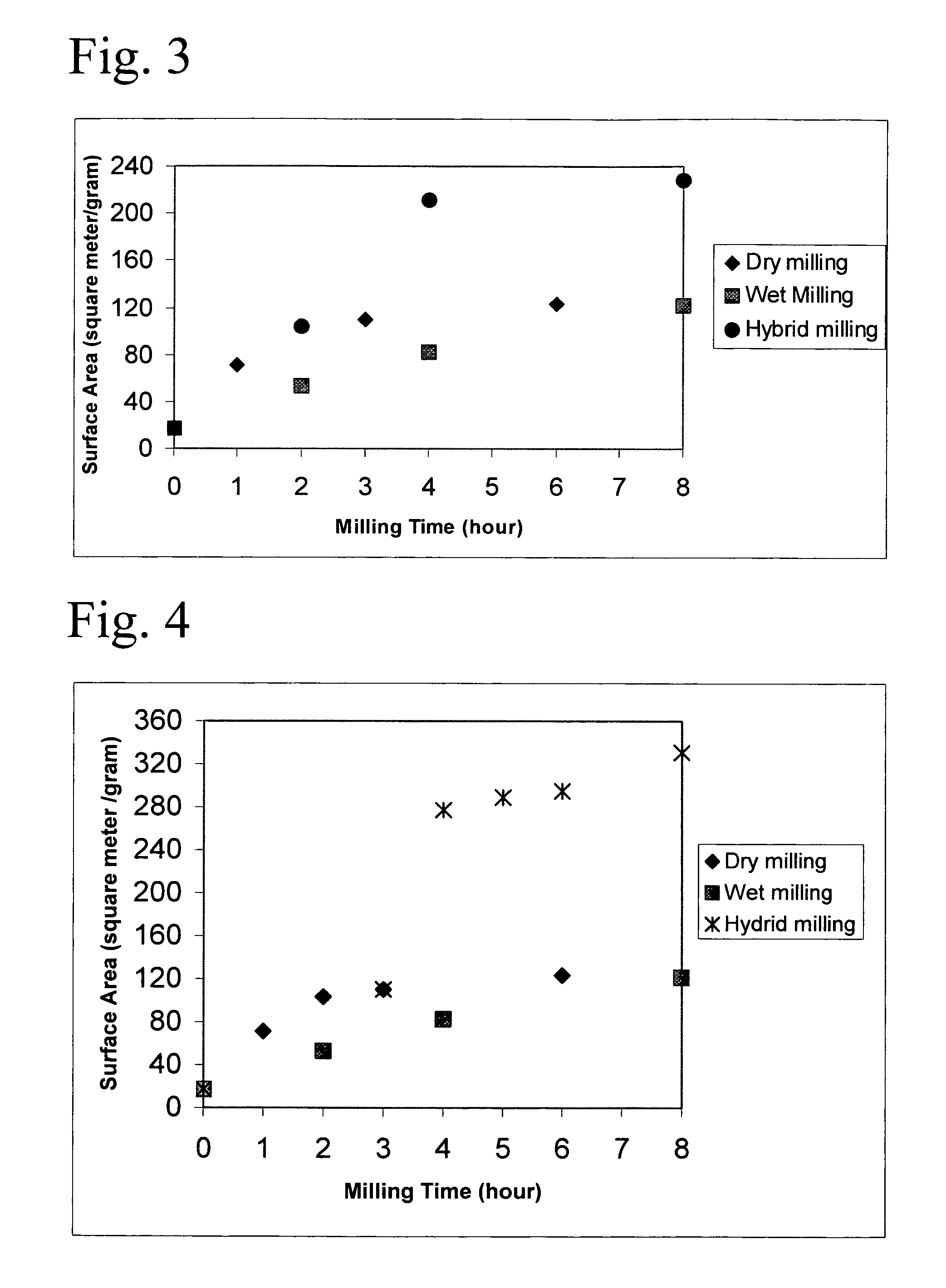Nano-talc powders of high specific surface area obtained by hybrid milling
a technology of nano-talc powder and hybrid milling, which is applied in the direction of cellulosic plastic layered products, applications, silicates, etc., can solve the problems of large number of steps of slurry grinding, inability to reduce the particle size of the majority of particles below 2 microns, and complex equipment and/or additives
- Summary
- Abstract
- Description
- Claims
- Application Information
AI Technical Summary
Benefits of technology
Problems solved by technology
Method used
Image
Examples
example 1
[0041]This example illustrates the increase in surface area when ground talc is further treated with water in a wet milling process.
[0042]UltraTalc™ 609 talc powder (800 g, Specialty Minerals Inc., initial SSA about 17 m2 / g, 0.9 um average particle size) and 4.8 mm yttria-stabilized zirconia balls (16 Kg, d=5.75 g / cm3) were loaded into an Union Process 1-S Attritor with stainless steel tank and shaft and mechanically milled (energy input about 0.8 KW / h) with external water cooling for 3 hours at 350 rpm to provide a powder with an SSA of 113.8 m2 / g). Untreated tap water (2.5 L) was added to the tank and milling continued for another 3 hours. The slurry was discharged and dried in an oven (100° C., 12 h, in air). The resulting powder has an SSA of 295.1 m2 / g. The particle size is an average platelet diameter of about 80 to 100 nm as determined by TEM on a sample dispersed in methanol and deposited on a carbon grid.
[0043]A 20 cm deep sample of the talc slurry separated into about 1-2 ...
example 2
[0044]This example illustrates the increase in surface area when ground talc is soaked in water for a period of time.
[0045]UltraTalc™ 609 talc powder (800 g Specialty Minerals Inc., initial SSA about 17 m2 / g, 0.9 um average particle size) and 4.8 mm-yttria stabilized zirconia balls (16 Kg) were loaded into an Union Process 1-S Attritor with stainless steel tank and shaft and mechanically milled for 3 hours at 350 rpm. During milling, the tank was cooled by cycling water to room temperature. After discharging, the SSA of the powder was 110.2 m2 / g. The milled powder was mixed with untreated tap water (5 parts by weight), soaked for 16 hours, and then was dried in an oven (100° C., 12 h, in air). The resulting powder had an SSA of 263.5 m2 / gram. The particle size was about 80 to 100 nm as determined by TEM on a sample dispersed in methanol and deposited on a carbon grid.
[0046]A 5 cm deep sample of the talc slurry separated into 3 cm water and 2 cm talc sediment over a period of about 2...
example 5
[0051]This example describes the hybrid milling process with a 1 hr. milling time providing the results illustrated in FIG. 2.
[0052]Talc was milled for 1 h as described in example 1 providing a powder with an SSA of 71 m2 / g. After adding 2.5 liters of tap water, milling was continued for another 7 hours with a sample taken at 3 hours (SSA 141.5 m2 / g). The slurry was discharged and dried in an oven to provide a powder with a SSA of 180.5 m2 / g and a particle size measured by TEM to be 120˜170 nm.
PUM
| Property | Measurement | Unit |
|---|---|---|
| particle size | aaaaa | aaaaa |
| specific surface area | aaaaa | aaaaa |
| specific surface area | aaaaa | aaaaa |
Abstract
Description
Claims
Application Information
 Login to View More
Login to View More - R&D
- Intellectual Property
- Life Sciences
- Materials
- Tech Scout
- Unparalleled Data Quality
- Higher Quality Content
- 60% Fewer Hallucinations
Browse by: Latest US Patents, China's latest patents, Technical Efficacy Thesaurus, Application Domain, Technology Topic, Popular Technical Reports.
© 2025 PatSnap. All rights reserved.Legal|Privacy policy|Modern Slavery Act Transparency Statement|Sitemap|About US| Contact US: help@patsnap.com



